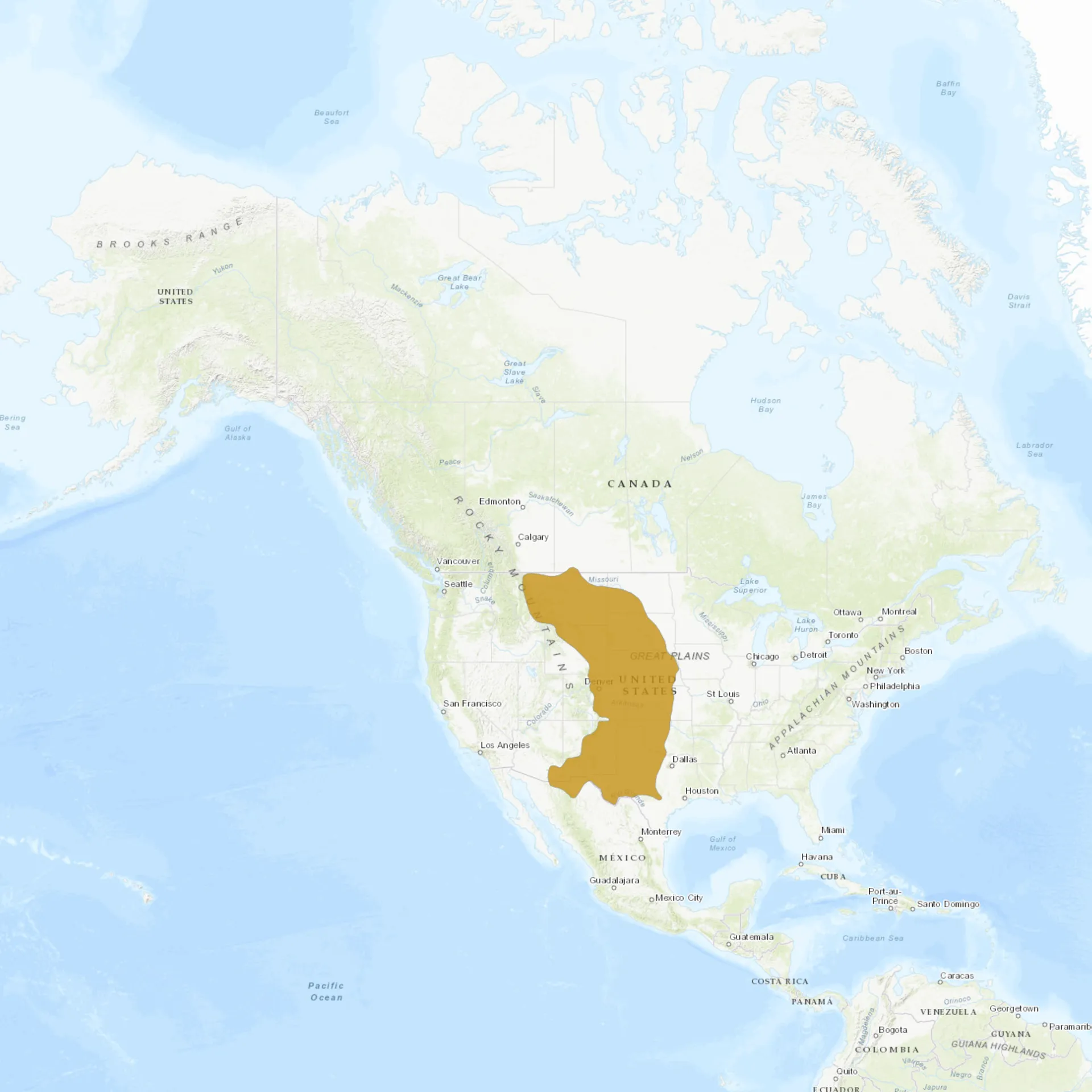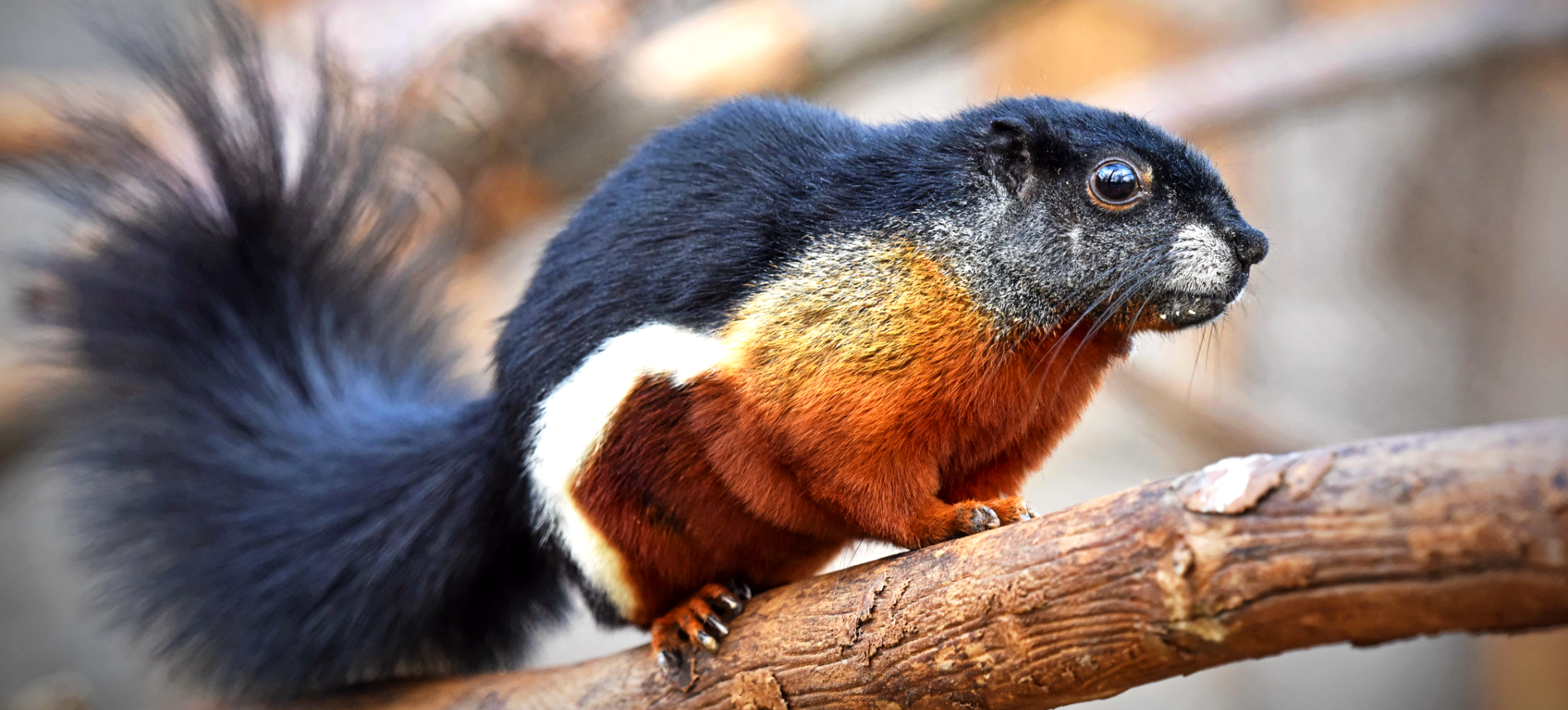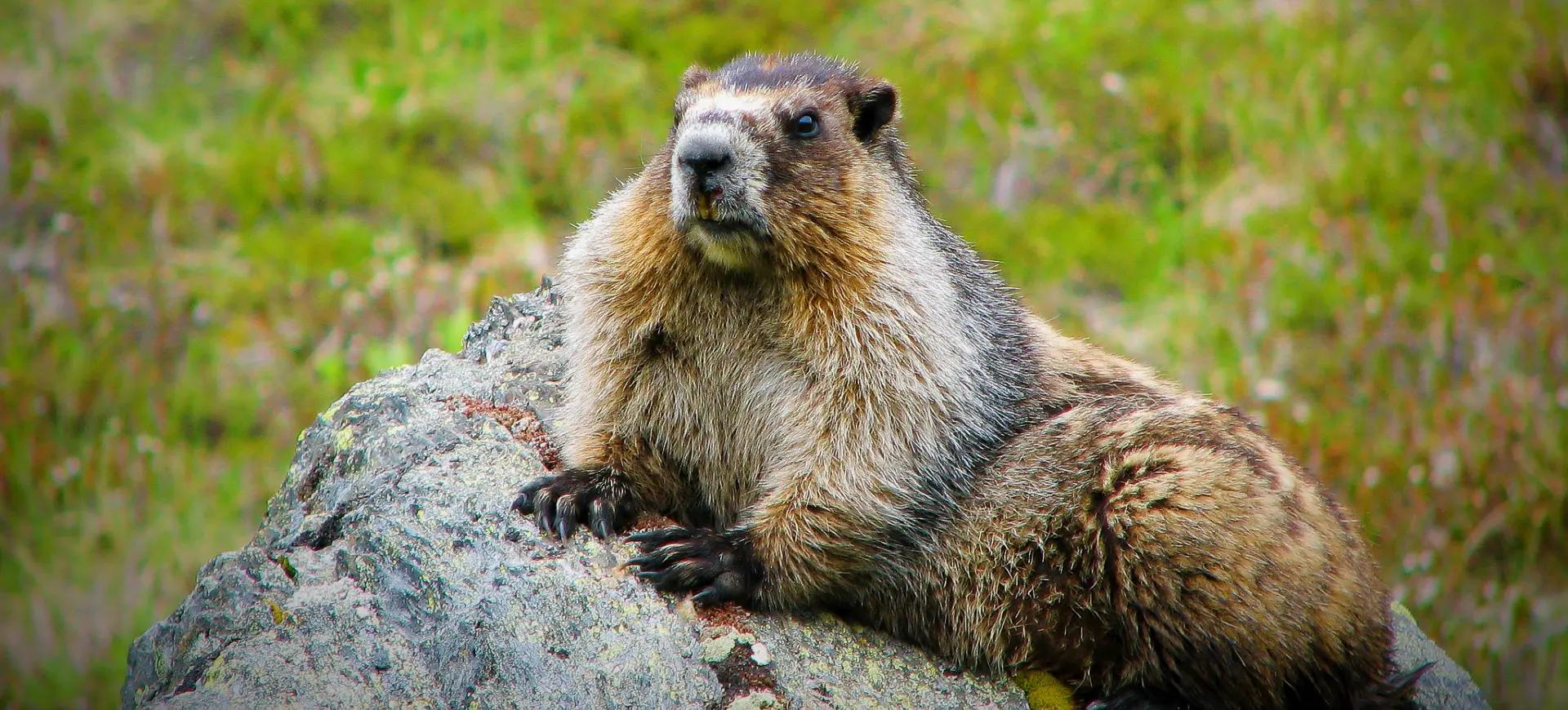Overview
The black-tailed prairie dog (Cynomys ludovicianus) is a highly social, burrowing rodent native to the grasslands of North America. It is named for its distinctive black-tipped tail and dog-like barking calls for communication. These prairie dogs live in large colonies called “towns,” which can cover vast areas and include thousands of individuals. Their burrowing activity is crucial in maintaining grassland ecosystems by aerating the soil and providing a habitat for other species.
Black-tailed prairie dogs are diurnal, meaning they are active during the day, particularly in the early morning and late afternoon. They are highly vocal and use a complex system of calls to warn colony members of approaching predators such as hawks, coyotes, and badgers. Their underground burrow systems provide shelter from predators and extreme weather conditions. These burrows are intricate, featuring separate chambers for sleeping, nesting, and waste disposal.
This species is a keystone species in its environment, as its presence benefits numerous other animals, including burrowing owls and black-footed ferrets. While their populations have declined due to habitat destruction and disease, they remain widespread across the central United States, Canada, and northern Mexico. Black-tailed prairie dogs reproduce once yearly, with females giving birth to litters of up to ten pups. Despite their ecological importance, they are often considered agricultural pests due to their tendency to graze on crops and compete with livestock for forage.
Current distribution:
Black-tailed prairie dogs are found throughout the Great Plains region of North America, from southern Canada to northern Mexico. Their range extends across states such as Montana, South Dakota, Texas, and New Mexico, where suitable grassland habitats exist. Although their populations have declined significantly due to habitat destruction and disease, they remain relatively widespread. Conservation efforts have helped maintain stable populations in some protected areas.
Historically, black-tailed prairie dogs occupied millions of acres, but their range has been reduced due to land conversion for agriculture and urban development. Sylvatic plague, a disease caused by Yersinia pestis, has also caused dramatic declines in some local populations. Despite these threats, they have shown resilience and adaptability, sometimes even recolonizing abandoned areas. Their population dynamics fluctuate naturally based on predation, disease, and habitat availability.
Physical Description:
Black-tailed prairie dogs have stout, cylindrical bodies with short legs adapted for digging. Their fur is light brown to tan, blending well with the dry grasslands where they live. They have small, rounded ears and large, dark eyes that provide excellent vision to detect predators. The species is named for its characteristic black-tipped tail, distinguishing it from other prairie dog species.
They typically measure between 14 to 17 inches (36–43 cm) in length, including their tail, and weigh between 1.5 to 3.5 lbs (0.7–1.6 kg). Males are generally larger than females, though both have similar body proportions. Their sharp claws and strong limbs allow them to dig extensive burrow systems efficiently. Seasonal changes in body weight occur, with individuals gaining more fat in the fall to survive harsh winters.

Lifespan: Wild: ~5 Years || Captivity: ~8 Years

Weight: Male: 2-3 lbs (0.9-1.3 kg) || Female: 1-2 lbs (0.45-0.9 kg)

Length: Male: 14-16 in (35-40 cm) || Female: 13-15 in (33-38 cm)

Height: Male: 11-13 in (28-33 cm) || Female: 10-12 in (25-30 cm)

Top Speed: 20 mph (32 km/h)
Characteristic:
Native Habitat:
Black-tailed prairie dogs inhabit temperate grasslands, thriving in open, well-drained areas with short grasses. Their preferred habitats include prairies, plains, and rangelands, where they can construct extensive burrow systems. These burrows provide shelter from extreme weather conditions, including hot summers and cold winters. The presence of loose, well-aerated soil is essential for their digging activities.
Unlike other prairie dog species, black-tailed dogs do not hibernate but may become less active during severe winter weather. Their colonies, or “towns,” consist of interconnected burrows and are often found in areas with limited tree cover. They avoid dense forests and wetlands, as these environments do not support their burrowing and foraging needs. Human activities, such as agriculture and urban expansion, have led to habitat fragmentation, reducing their available range.
Climate Zones:
Biomes:
Biogeographical Realms:
Continents:
Countries:
Diet:
Diet & Feeding Habits:
Black-tailed prairie dogs are herbivores, primarily feeding on grasses, seeds, roots, and flowering plants. Their diet changes seasonally, with fresh green vegetation preferred in spring and summer, while dried grasses and seeds become the main food sources in winter. They occasionally consume insects, especially during times of food scarcity. Water is obtained mainly through diet, as they rarely need standing water.
Grazing by prairie dogs influences plant growth in their habitat, often increasing the nutrient content of grasses. They clip tall vegetation around their burrows to maintain visibility, reducing hiding spots for predators. In agricultural areas, they may feed on crops such as wheat and alfalfa, leading to conflicts with farmers and ranchers. Their foraging behavior supports the ecosystem by creating open grassland patches that benefit other species.
Mating Behavior:
Mating Description:
Black-tailed prairie dogs have a polygynous mating system, where dominant males mate with multiple females. Breeding occurs once per year, typically between late winter and early spring. After a gestation period of approximately 33 to 38 days, females give birth to a litter of 1 to 10 pups. The young are born blind and hairless but develop rapidly, emerging from the burrow after about six weeks.
Females provide most parental care, nursing the pups and protecting them from threats. Males do not participate in raising the young but defend their territories from rival males. Once weaned, juveniles become independent and may disperse to establish their burrows. Environmental conditions, predation, and colony stability influence reproductive success.
Reproduction Season:
Birth Type:
Pregnancy Duration:
Female Name:
Male Name:
Baby Name:
Social Structure Description:
Black-tailed Prairie Dogs are highly social creatures living in organized colonies often called “towns.” Within these towns, the basic social unit is a family group known as a “coterie,” typically consisting of one adult male, multiple adult females, and their offspring. The cohesiveness of the clique is vital for the colony’s social structure and provides a support system for rearing young and defending territory.
Communication is a fundamental aspect of life within and between coteries in a prairie dog town. They employ a range of complex vocalizations to convey different messages, from alerting others about approaching predators to signaling the all-clear. This advanced communication system plays a critical role in the social dynamics of the colony and contributes to their collective survival.
Groups:
Conservation Status:
Population Trend:
Black-tailed Prairie Dogs form expansive colonies known as “towns,” which can contain several thousand individual members. These towns are divided into smaller family units called “coteries,” usually consisting of one adult male, multiple adult females, and their offspring. Coteries are the larger prairie dog community’s basic social and territorial units.
While Black-tailed Prairie Dogs face challenges from habitat loss due to human agricultural and developmental activities, their population remains stable. Large colonies can still be found across portions of the Great Plains despite encroachment into their native lands. The stability in their numbers indicates a degree of resilience in adapting to changing environmental conditions.
Population Threats:
One of the major threats to the Black-tailed Prairie Dog is the loss of habitat, primarily driven by agricultural expansion and urban development. As human activities continue infringing upon the natural grasslands, suitable habitats for these animals are diminishing. These developments reduce their living space and disrupt the intricate social structure within their colonies.
In addition to habitat loss, Black-tailed Prairie Dogs are often labeled as pests by farmers who believe they compete with livestock for grazing vegetation. This perception has led to culling efforts, further contributing to their decline. These targeted killings reduce their numbers and can lead to fragmentation of their social groups, adding another layer of risk to their survival.
Conservation Efforts:
Several conservation initiatives are aimed at preserving the Black-tailed Prairie Dog populations. Habitat restoration is one key approach, where efforts are made to regenerate native grasslands that these animals inhabit. Legal protections have also been established in some regions to prevent indiscriminate killing, adding a layer of safety for these communities.
Public awareness campaigns serve as another crucial element in the conservation strategy. By educating the public about the ecological importance of Black-tailed Prairie Dogs, these campaigns aim to change perceptions, particularly among farmers who view them as pests. Through a combination of legal measures, habitat restoration, and public awareness, conservationists are working to ensure the long-term survival of this species.
Additional Resources:
Fun Facts
- Black-tailed prairie dogs have one of the most complex vocal communication systems among rodents.
- They are a keystone species, meaning their presence is crucial to the health of their ecosystem.
- Their burrows can be over 10 feet (3 meters) deep and stretch for hundreds of feet.
- Prairie dog “towns” can cover hundreds of acres and house thousands of individuals.
- They engage in “kissing,” where they touch teeth to recognize family members.
- Black-footed ferrets, one of the most endangered mammals in North America, rely on prairie dogs as their primary food source.
- They help aerate and enrich the soil through their burrowing activities.
- Prairie dogs exhibit cooperative social structures, with sentinels standing watch for predators.
- They do not hibernate, remaining active year-round.
- Historically, their populations numbered billions before human development reduced their range.













